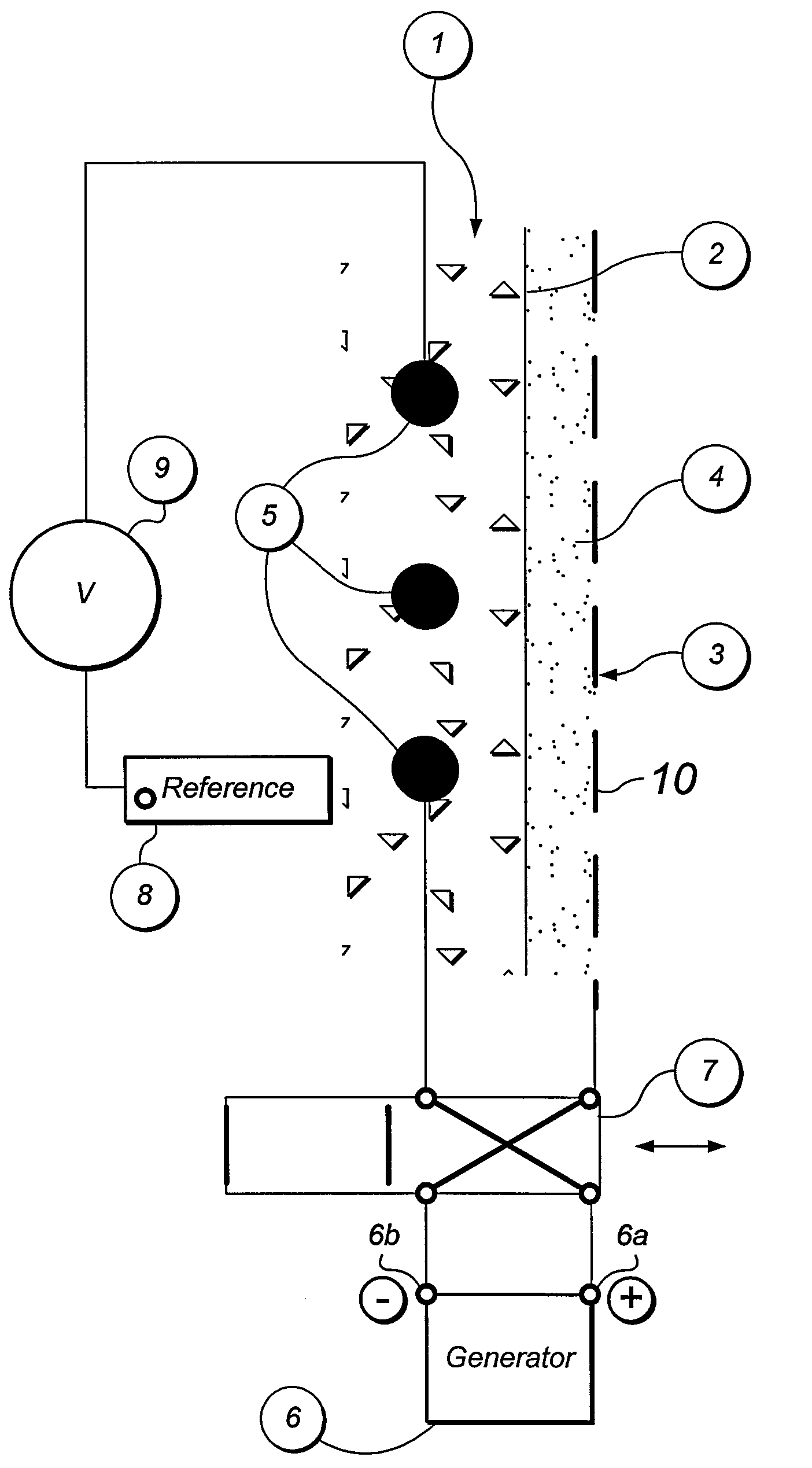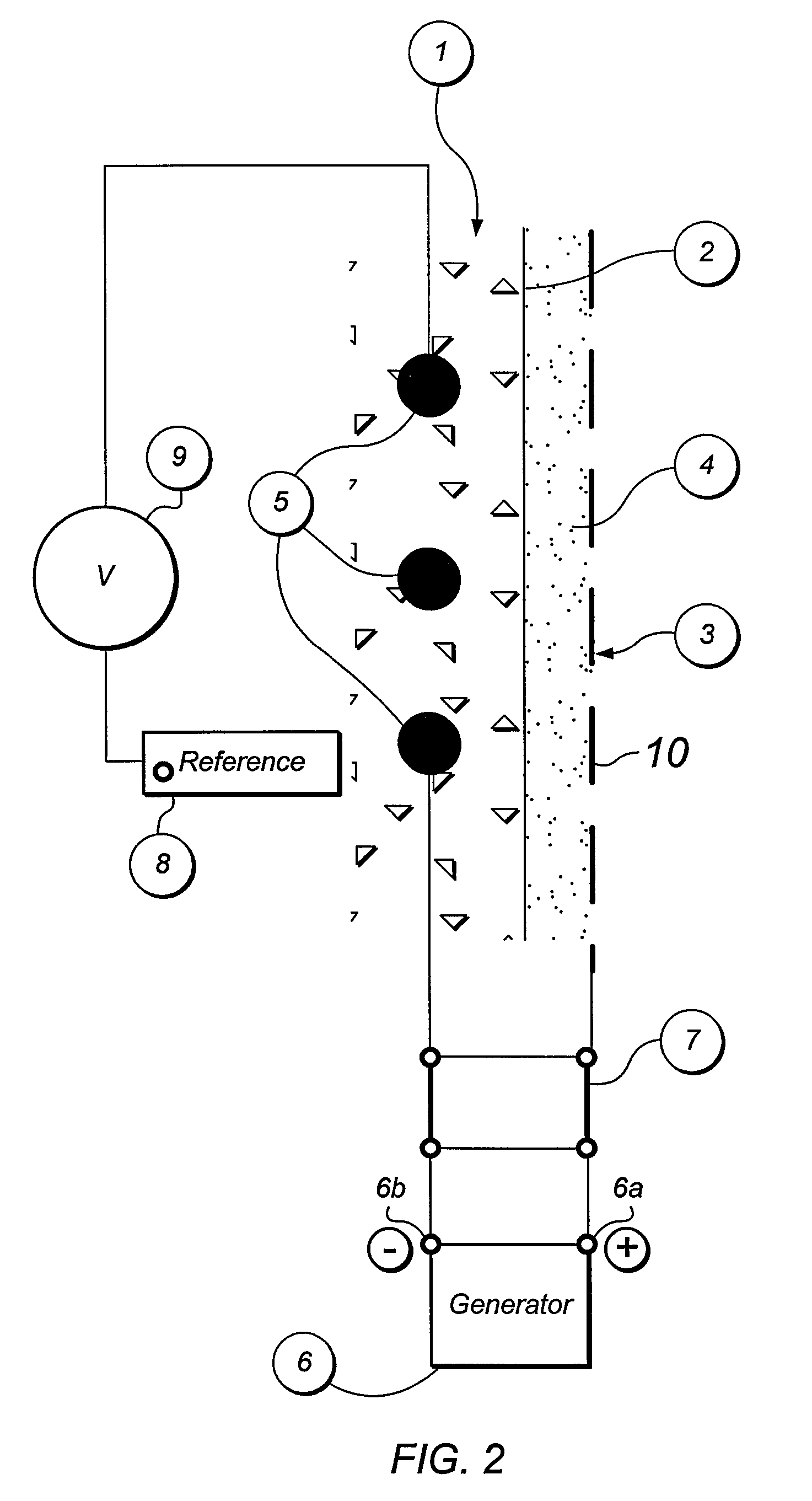Process for treating salt in a porous structure and corresponding apparatus
a technology of porous structure and salt, which is applied in the direction of electrolysis process, crystal growth process, isotope separation, etc., can solve the problems of reducing the ph of the solution contained in the pores of the concrete, corrosion of the steel embedded in the concrete, and the movement of interstitial water of the concrete, so as to reduce the formation of hydrogen gas and check the dampness of the electrode
- Summary
- Abstract
- Description
- Claims
- Application Information
AI Technical Summary
Benefits of technology
Problems solved by technology
Method used
Image
Examples
Embodiment Construction
[0020]In the prior art, it was envisaged that a surface of a constriction might be treated by wetting. This type of process enables the surface to be cleaned and possibly slightly desalinated to a very shallow depth but has virtually no effect at the level of a reinforcement, i.e. at moderate or great depth.
[0021]The document EP 0401519 (Miller) proposes that a voltage comprising a long positive phase and a short negative phase be applied to the electrodes. However, this type of process does not remedy an increase in electrical resistance caused, for example, by the presence of hydrogen gas or drying out. The document EP 0398117 (Miller) provides a confused and even contradictory teaching which makes it difficult to determine its actual teaching.
[0022]In any case, the invention sets out to allow improved desalination of a porous structure which is at least partly conductive, notably having a conductive reinforcement. The structure may be of reinforced concrete overall, possibly coat...
PUM
| Property | Measurement | Unit |
|---|---|---|
| thixotropic | aaaaa | aaaaa |
| diameter | aaaaa | aaaaa |
| diameter | aaaaa | aaaaa |
Abstract
Description
Claims
Application Information
 Login to View More
Login to View More - R&D
- Intellectual Property
- Life Sciences
- Materials
- Tech Scout
- Unparalleled Data Quality
- Higher Quality Content
- 60% Fewer Hallucinations
Browse by: Latest US Patents, China's latest patents, Technical Efficacy Thesaurus, Application Domain, Technology Topic, Popular Technical Reports.
© 2025 PatSnap. All rights reserved.Legal|Privacy policy|Modern Slavery Act Transparency Statement|Sitemap|About US| Contact US: help@patsnap.com



